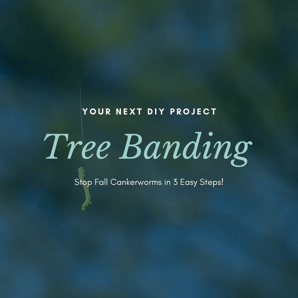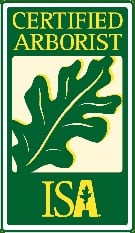Charlotte, NC is known to have severe cankerworm infestations. The cankerworm has a four-stage life: egg, pupa, larva, and adult. After mating in December, the female moths crawl up trees to lay eggs on twigs and small branches. As leaves come out in the spring the eggs hatch leaving some caterpillars to feed on the leaves. Cankerworms on their own typically do not kill trees; however, repeated defoliation weakens trees leaving them susceptible to other stresses. It is important not to wait until spring to fight cankerworms. If you're looking for Residential Tree Services we have you covered. We can band your trees or can walk you through the process if you'd like to tackle this project yourself.
Controlling cankerworms starts in the fall with tree banding. Tree banding is a first defense to stop cankerworms in their tracks. What exactly is tree banding? Tree banding is a glue barrier applied to the tree trunk; as cankerworms crawl up the tree, they are caught by the gluey substance. You can band your trees in 3 easy steps!

Do-It-Yourself Tree Banding
- Step 1 Purchase tree banding. Tree banding is a glue barrier that sticks to the tree trunk. This is the first step in banding your trees for cankerworms.
- Step 2 Apply tree banding around the circumference of trunk, only circling the trunk once is necessary. Warning: Tree bands are sticky! Wrap around the trunk of your tree and press to adhere.
- Step 3 Keep an eye on tree banding throughout the fall and spring season. It's important to keep an eye on how your bands are doing. If you notice a lot of worms being stuck to the band that might indicate it's time to replace the band. If so, repeat steps 1 -3.
If you'd like for us to band your trees, we're happy to do so! For more information on cankerworms or tree banding, speak to a Certified Arborist today.








